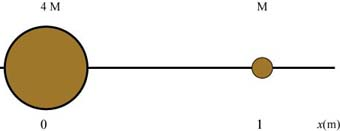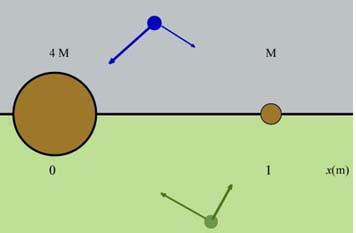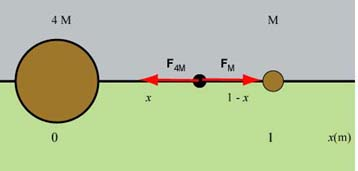Newtons Laws EX 37
The two masses are placed on the x-axis as shown in the diagram below:

Now, we want to place the small particle of mass so that it is in equilibrium. There are only two forces acting on this particle: the gravitational force exerted by the mass , , and the gravitational force exerted by the mass , . Both of these forces are attractive. In other words, points towards the mass and points towards the mass . Since we want to be in equilibrium we are looking for a place where these two forces have equal magnitudes and opposite directions.
Let's think where we could place the particle so that the forces have equal magnitudes and opposite directions. We can think of three regions in the space around the masses and (see the diagram below): x-axis, the gray region above and greenish region below the x-axis.

As you can see from the sketches above, the placement of in either the blue or greenish region results in forces which do not have opposite directions. Therefore we should look for a placement along the x-axis. Try to visualize which way the two forces will act if the particle is (i) to the left of , (ii) in between the two masses, and (iii) to the right of mass . I think that you will reach the conclusion that the particle should be located between and at some distance from . Its distance from will then be (1 - x).

Now we can use the Newton Law of gravitation and write the equation stating that the magnitudes of the two forces are equal:
Cancelling , and , we get:
Take (positive) square roots:
Cross multiply and solve for to find m.